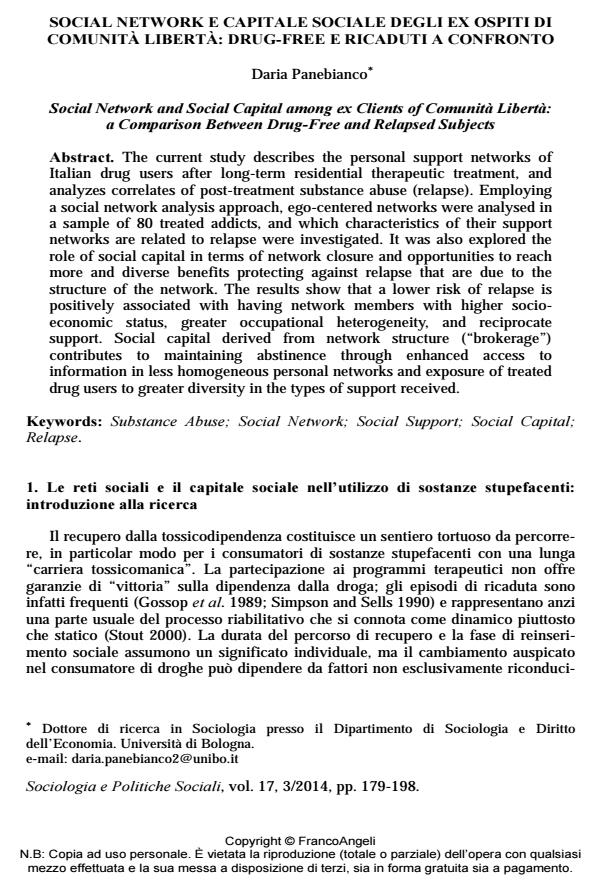Social network e capitale sociale degli ex ospiti di Comunità Libertà: drug-free e ricaduti a confronto
Titolo Rivista SOCIOLOGIA E POLITICHE SOCIALI
Autori/Curatori Daria Panebianco
Anno di pubblicazione 2015 Fascicolo 2014/3
Lingua Italiano Numero pagine 20 P. 179-198 Dimensione file 146 KB
DOI 10.3280/SP2014-003009
Il DOI è il codice a barre della proprietà intellettuale: per saperne di più
clicca qui
Qui sotto puoi vedere in anteprima la prima pagina di questo articolo.
Se questo articolo ti interessa, lo puoi acquistare (e scaricare in formato pdf) seguendo le facili indicazioni per acquistare il download credit. Acquista Download Credits per scaricare questo Articolo in formato PDF

FrancoAngeli è membro della Publishers International Linking Association, Inc (PILA)associazione indipendente e non profit per facilitare (attraverso i servizi tecnologici implementati da CrossRef.org) l’accesso degli studiosi ai contenuti digitali nelle pubblicazioni professionali e scientifiche
The current study describes the personal support networks of Italian drug users after long-term residential therapeutic treatment, and analyzes correlates of post-treatment substance abuse (relapse). Employing a social network analysis approach, ego-centered networks were analysed in a sample of 80 treated addicts, and which characteristics of their support networks are related to relapse were investigated. It was also explored the role of social capital in terms of network closure and opportunities to reach more and diverse benefits protecting against relapse that are due to the structure of the network. The results show that a lower risk of relapse is positively associated with having network members with higher socioeconomic status, greater occupational heterogeneity, and reciprocate support. Social capital derived from network structure (“brokerage”) contributes to maintaining abstinence through enhanced access to information in less homogeneous personal networks and exposure of treated drug users to greater diversity in the types of support received.
Parole chiave:Substance Abuse; Social Network; Social Support; Social Capital; Relapse
Daria Panebianco, Social network e capitale sociale degli ex ospiti di Comunità Libertà: drug-free e ricaduti a confronto in "SOCIOLOGIA E POLITICHE SOCIALI" 3/2014, pp 179-198, DOI: 10.3280/SP2014-003009